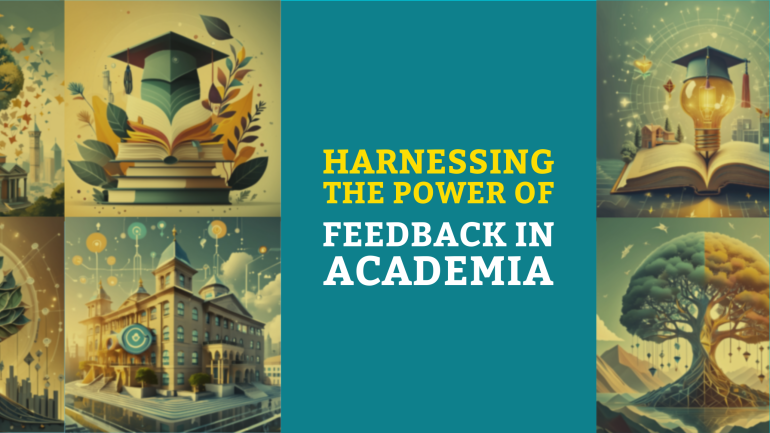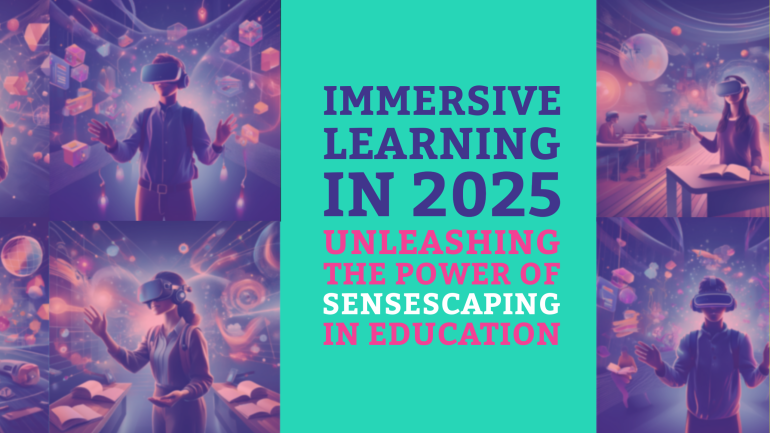Table of Contents
TL;DR: Harnessing the Power of Feedback in Academia
- Feedback is important: Feedback plays a crucial role in academia, helping students and educators identify strengths, weaknesses, and areas for improvement.
- Timely feedback is key: Providing feedback promptly allows students to make necessary adjustments and enhance their learning experience.
- Constructive criticism is valuable: Feedback should be constructive, specific, and focused on behaviors that can be improved rather than personal traits.
- Feedback fosters growth mindset: Encouraging a growth mindset through feedback helps students develop resilience, motivation, and a willingness to embrace challenges.
- Feedback should be two-way: Creating a culture of feedback where students can also provide input on their learning experiences promotes a collaborative and supportive academic environment.
There’s no denying the critical role that feedback plays in academia. Whether it’s from peers, professors, or even self-assessment, feedback is a powerful tool that can significantly impact student learning outcomes. This article explores the various forms of feedback mechanisms available in academic settings and examines into the strategies for effectively utilizing feedback to enhance academic performance. Understanding how to harness the power of feedback can lead to improved student engagement, greater understanding of course material, and ultimately, academic success.
Theoretical Underpinnings of Feedback
Key Feedback Models and Their Relevance
On the journey to harnessing the power of feedback in academia, understanding key models is crucial. Models such as the ‘Feedback Sandwich’ (comprising positive feedback, constructive criticism, and positive feedback) and the ‘GROW’ model (Goal, Reality, Options, Will) are widely recognized and utilized. These models provide a structured approach to delivering feedback that is constructive and effective in driving academic improvement.
The Psychology of Receiving and Interpreting Feedback
On the recipient’s end, the psychology of feedback reception plays a vital role. Students and academics must navigate through feelings of vulnerability, defensiveness, or even rejection when receiving feedback. Understanding cognitive biases, such as confirmation bias or the Dunning-Kruger effect, can help in overcoming these challenges and embracing feedback as a tool for growth.
Underpinnings: Furthermore, recognizing the emotional and psychological impact of feedback is necessary. Individuals may interpret feedback based on past experiences, self-esteem levels, or even cultural backgrounds. Addressing these factors can lead to more meaningful and impactful feedback exchanges.
Effective Feedback Strategies in Academic Environments
Best Practices for Providing Constructive Feedback
Environments in academia can greatly benefit from effective feedback strategies. When providing constructive feedback to students, it is crucial to be specific and timely. Avoiding vague comments and giving feedback promptly after an assignment or assessment can help students understand their mistakes and improve their work. It is also important to offer suggestions for improvement rather than just pointing out errors. Additionally, maintaining a positive and supportive tone in feedback can motivate students to continue learning and growing.
Techniques for Encouraging Openness to Feedback Among Learners
Among the most important techniques for encouraging openness to feedback among learners is creating a safe and non-judgmental environment. This can be achieved by emphasizing that feedback is meant to support their learning and development rather than criticize them. Additionally, encouraging self-reflection and active listening skills can help students become more receptive to feedback. Implementing peer feedback exercises can also foster a culture of collaboration and continuous improvement among learners.
Feedback as a Tool for Enhancement
Using Feedback to Improve Teaching Methodologies
Teaching methodologies in academia are constantly evolving, and feedback plays a crucial role in this process. Teachers can use feedback from students, peers, or teaching evaluations to assess the effectiveness of their teaching methods and make necessary improvements. By incorporating constructive feedback, educators can refine their teaching techniques, engage students more effectively, and ultimately enhance the learning experience.
Feedback Loops for Academic Research and Collaboration
With the rapid advancement of technology and the increasing emphasis on interdisciplinary research, feedback loops have become vital in academic research and collaboration. Establishing feedback mechanisms among researchers, collaborators, and stakeholders facilitates timely adjustments, fosters innovation, and enhances the quality of research outcomes. This iterative process enables continuous improvement, ensures alignment with project goals, and promotes a culture of collaboration and knowledge sharing.
Using feedback loops in academic research and collaboration is not only beneficial for improving the quality of research but also for enhancing the efficiency of the overall process. By actively seeking and incorporating feedback at various stages of a project, researchers can identify potential gaps, address challenges, and capitalize on opportunities for growth and development. This approach not only enhances the credibility and impact of research but also cultivates a culture of continuous learning and improvement within academic communities.
Challenges and Solutions in Academic Feedback
Overcoming Resistance to Feedback
Keep in mind that not all students or educators readily embrace feedback. Resistance to feedback is a common hurdle in academia that can hinder growth and improvement. The key is to establish a culture where feedback is viewed as a valuable tool for personal and professional development.
Integrating Technology in Feedback Processes
The integration of technology in feedback processes can revolutionize the way feedback is given and received in academia. Technology offers the advantage of making feedback more accessible, timely, and tailored to individual needs. By leveraging tools such as online platforms, feedback can be delivered in various formats, including written, audio, and video, enhancing the overall learning experience.
Processes involving technology allow for automated feedback systems that can provide instant responses to students, increasing efficiency in the feedback loop. Moreover, personalized feedback can be generated based on student performance data, improving the overall quality of feedback provided.
To wrap up
Hence, feedback in academia is a powerful tool that can greatly benefit both students and educators. Through constructive feedback, students can gain valuable insights into their strengths and weaknesses, enabling them to improve and excel in their academic pursuits. Similarly, educators can use feedback to enhance their teaching methods and tailor their approach to better support student learning. By fostering a culture of open communication and continuous improvement, academia can harness the power of feedback to create a more dynamic and effective learning environment for all stakeholders involved.
FAQ
Q: What is the importance of feedback in academia?
A: Feedback in academia is crucial as it helps students to understand their strengths and areas needing improvement. It also enables educators to assess student progress and tailor their teaching methods accordingly.
Q: How can students benefit from timely feedback?
A: Timely feedback allows students to make necessary adjustments while the material is still fresh in their minds. It promotes self-reflection, motivation, and overall improvement in academic performance.
Q: What are some effective ways for educators to provide feedback to students?
A: Educators can provide feedback through written comments on assignments, one-on-one discussions, peer evaluations, rubrics, and audio/video recordings. The method chosen should align with the learning objectives and the individual student’s needs.
Q: How does constructive feedback contribute to a positive learning environment?
A: Constructive feedback fosters a culture of growth and development in academia. It builds trust between educators and students, encourages open communication, and creates a supportive atmosphere where learning flourishes.
Q: How can students make the most of feedback received from educators?
A: Students should approach feedback with an open mind, seek clarification if needed, set actionable goals based on the feedback provided, and track their progress over time. Incorporating feedback into their learning process will lead to continuous improvement.





